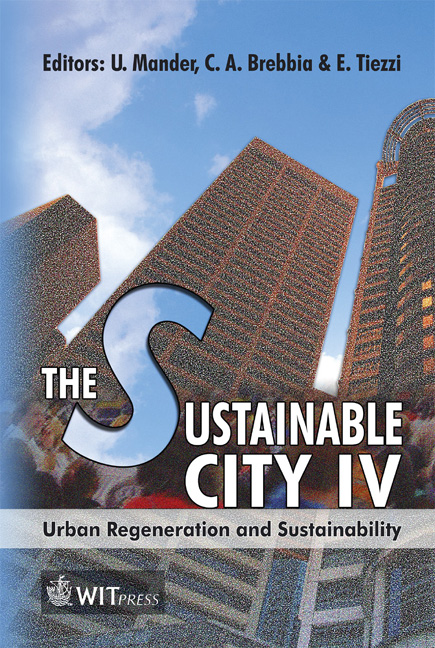Effects Of A Non-motorized Transport Infrastructure Development In The Bucharest Metropolitan Area
Price
Free (open access)
Transaction
Volume
93
Pages
9
Published
2006
Size
649 kb
Paper DOI
10.2495/SC060561
Copyright
WIT Press
Author(s)
M. Popa, S. Raicu, D. Costescu & F. Rusca
Abstract
Since 1990, in Romania and especially in Bucharest there has been a constantly growing tendency towards new expensive residential settlements located in the suburbs. Following this, even more cars have increased the road traffic towards the city centre. In the last few years, the need to extend the metropolitan area of Bucharest City has become more accepted as a solution to relocate some socio-economic activities. Bucharest is a historically developed city and there is no available space to increase the street capacity for cars and traffic. In this paper, we propose a bicycle infrastructure project to support the sustainable development of the new metropolitan area of Bucharest, and develop a model to evaluate the impacts of such a transport infrastructure on the spatial accessibility of the city centre. We reveal the importance of bicycle parking locations and their integration with urban public transport (subway and light rail). Taking into consideration a natural, native disposition of the younger population to use bicycles, in this way, we will provide quite an effective means of attracting them to non-motorized transportation as opposed to car use. Keywords: non-motorized transportation, metropolitan area, bicycle infrastructure, spatial accessibility, public urban transit, bicycle parking. 1 Bucharest metropolitan area and transportation 1.1 The situation today With over 2 million inhabitants (over 10% of the country’s population), Bucharest is the largest town in the country and, with its multiple historic
Keywords
non-motorized transportation, metropolitan area, bicycle infrastructure, spatial accessibility, public urban transit, bicycle parking.





